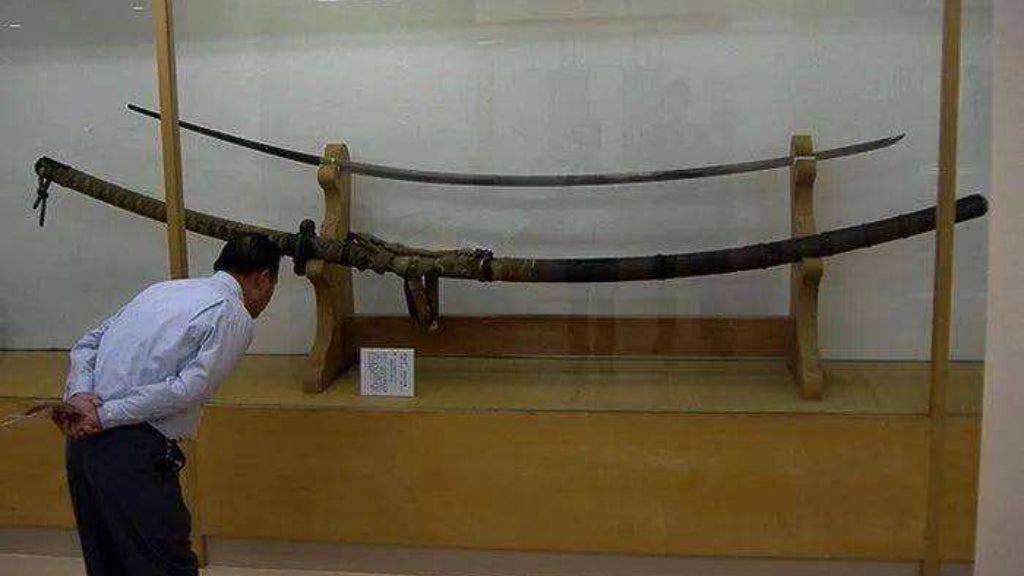Why Your Blade Didn’t Cut Deep Enough and How to Improve

Why Your Blade Didn’t Cut Deep Enough and How to Improve
When your blade does not cut deep enough, the reasons often lie in a combination of factors, including the blade's design, the sharpening process, and the user's technique. For an odachi, achieving an effective cut requires careful attention to the blade's angle, sharpness, and how it is wielded. Let’s explore these factors in greater detail.
-
Blade Angle and Sharpness
The cutting ability of any sword, especially an odachi, relies heavily on the angle at which the blade is ground. A blade with a thin, sharp edge is better suited for slicing through soft targets, but it may struggle or sustain damage when cutting harder materials. Conversely, a thicker edge is more durable but lacks the precision needed for clean, deep cuts. If your blade did not cut deep enough, it could be due to a mismatch between the blade angle and the material being cut. Ensuring that the blade's grinding process matches its intended use is crucial for optimal performance. -
Material and Maintenance
A poorly maintained blade can also be a culprit. Over time, even the sharpest edges can dull due to wear, oxidation, or improper storage. Regular polishing and sharpening are essential to preserve the cutting potential of an odachi. A well-maintained blade, with a hardness rating balanced between durability and flexibility (typically between 50HRC and 60HRC), ensures better performance during test cuts or combat practice. -
User Technique
Even a perfectly crafted blade can fail to perform if wielded improperly. The art of cutting with an odachi involves coordinated movements of the waist, legs, and arms, as well as selecting the proper angle of attack. For example, when performing a test cut on bamboo, the ideal blade-to-target angle is approximately 45 degrees. Deviations from this optimal angle can result in incomplete or shallow cuts, as the force is not properly distributed through the target. Mastering the correct angle and applying strength effectively are key to maximizing the blade's potential. -
Target Material
Lastly, the material you are attempting to cut plays a significant role. Softer materials, such as flesh or light fabrics, require a different edge and cutting approach than harder materials, like bamboo or armor. Ensuring that your blade is suited to the intended task will enhance cutting efficiency and prevent damage to the edge.
In summary, if your blade does not cut deep enough, evaluate its design, sharpness, and the technique you employ. By understanding these factors, you can improve both the sword's performance and your skill as a swordsman. Whether training for martial arts, performing test cuts, or simply appreciating the craftsmanship of an odachi, mastering these details will bring you closer to achieving the perfect cut.
The Japanese odachi, a large sword traditionally used by foot soldiers in the samurai class of feudal Japan, is a unique type of traditionally made Japanese sword. Its extended blade length and size make it different from other swords, requiring a more complicated traditional heat treatment process to enhance its toughness and elasticity.
This heat treatment ensures that the odachi can withstand the impact of combat, making it ideal for blocking and slashing. The traditional Japanese craftsmanship involved in creating the odachi highlights its significance in Japanese sword-making heritage, with its length and unique design marking it as a formidable type of sword in battle.
1. The blade of the odachi sword
The performance requirements of a long knife and a short knife on the blade are different. The long katana usually needs to block and collide with other swords in the fight, so the odachi sword blade needs to have a certain elasticity, and the blade must also have a certain degree of toughness, not as hard as possible.
Short knives are usually not used for intense fighting, so the rigidity of the blade is large, and the hardness of the blade can be slightly larger, but it is not as hard as possible. If the toughness of the blade is insufficient, the hard blade will chip, which is the most difficult damage to repair. If the blade is too soft, it may cause a large curling edge, which is also difficult to recover. Usually, the edge hardness of a good knife should be above 50HRC Rockwell hardness and below 60HRC. In short, the higher the hardness, the higher the wear resistance, but also the greater the brittleness, and the hardness does not exceed 60HRC.

2. The beginning of the odachi katana
Depending on the application, the grinding requirements for odachi knives vary. The so-called cutting ability, in addition to the hardness and toughness of the blade, the angle of the cutting edge during grinding is very important. When the blade is sharpened, the angle of the blade is too thick, which is not conducive to assassination and cutting, but it is suitable for cutting hard objects within the armor.
On the contrary, for stabbing and cutting, the angle of the blade is small and thin when the blade is ground, and the blade of this kind of knife is very sharp and unusually sharp. But it is not conducive to cutting hard objects, otherwise it is easy to lose the edge or curl the blade. This principle has long been known to many street vendors. In the past, there were often hawkers selling kitchen knives on the streets, holding the kitchen knives to chop iron wire to show that the steel of the knives was good.
In fact, if you look closely, you will know that the kitchen knife used to chop iron wire has either a thick blade with a wide angle or a thin blade with no sharp edge. This kind of blade is only suitable for chopping hard objects, and it is very laborious to cut a piece of meat. It can be seen that the importance of the opening angle to the cutting ability, that is to say, the kind of treasure knife that can not only cut the iron but also blow the hair and break the hair does not exist. Each knife can only focus on one of the functions of cutting hard objects or soft objects, which is determined from the beginning of the grinding process. After reading this blog, do you want to buy samurai sword online? COOLKATANA would be a great choice for you!
3. The slashing of the odachi
Even with a good knife, the cutting effect depends on the skill of the user. When splitting the knife, use the strength of the waist, legs and arms to coordinate and exert force to enhance the strength and speed of the splitting knife. In addition, be good at choosing the angle of contact between the blade of the odachi and the target. For example, when using green bamboo as a test cut, it is generally believed that around 45 degrees is the best. If the angle is greater than 60 degrees, the blade may not cut deep enough to cut it cleanly, and if it is less than 30 degrees, the blade may slip over the target surface.
